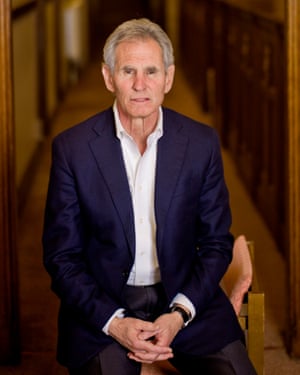Simon Kuper in The FT
You turn the pages of yellowing student newspapers from 30 years ago, and there they are, recognisably the same faces that dominate today’s British news. Boris Johnson running for Union president, Michael Gove winning debating contests, Jeremy Hunt holding together the faction-ridden Oxford University Conservative Association (OUCA).
Six of the seven men who survived the first round of the Tory leadership contest earlier this month studied at Oxford. The final two remaining candidates, Johnson and Hunt, were contemporaries along with Gove in the late 1980s.
The UK is thus about to install its 11th Oxonian prime minister since the war. (Three postwar PMs didn’t attend university, and Gordon Brown went to Edinburgh.) This beats even the grip of the Ecole Nationale d’Administration on the French presidency (four of the past six presidents have been énarques), let alone Harvard’s on the White House.
When I arrived in Oxford aged 18 in October 1988, it was still a very British and quite amateurish university, shot through with dilettantism, sexual harassment and sherry. Gove, Hunt and the much less political David Cameron had graduated that summer, and Johnson in 1987, but from my messy desk at the student newspaper Cherwell I covered a new generation of wannabe politicians.
You couldn’t miss Jacob Rees-Mogg, seemingly the only undergraduate who always wore a suit, or the early Europhobe Dan Hannan. Both became ideological fathers of Brexit. I’m still covering them today.
This isn’t a jolly boys’ story about the japes we all had together. I didn’t know any of the Oxford Tories personally, because we were separated by the great Oxford class divide: I was middle class, from a London comprehensive (after years abroad), and they were mostly upper-class public schoolboys. But the night Brexit happened, I sensed it was rooted in 1980s Oxford. I wrote a column about this in July 2016, then gradually came to see that the roots went even deeper than I had realised.
Any understanding of the British ruling class — and the next prime minister — requires returning to that place and time.
At Cherwell, we were always writing about the Oxford Union. The debating society, off a courtyard behind the Cornmarket shopping street, was a kind of teenage House of Commons. Its officers wore white tie, speakers black tie, and everyone called each other “honourable member”. You won debates not by boring the audience with detail, but with jokes and ad hominem jibes.
Almost all aspiring Tory politicians passed through the Union. Theresa May never won the presidency — disadvantaged by her gender and with no rhetorical gifts — but in 1979 her future husband Philip did. The Mays had been introduced at an Oxford Conservative disco by another Union president, Benazir Bhutto, future prime minister of Pakistan.
In May’s day, the Union was a small circle of debating obsessives. But then it hit financial trouble and began recruiting among the broader student population. By 1988, about 60 per cent of Oxford’s undergraduates had paid the £60 joining fee.
I never joined but I sometimes got press tickets to debates, and I still remember a young Benjamin Netanyahu trouncing hecklers, and, on the 50th anniversary of Dunkirk, the former prime minister and ex-Union president Ted Heath evoking Oxford on the eve of the second world war, when German invasion loomed. Another lure was the Union bar, which — almost miraculously in 1980s Britain — stayed open till 2.30am, until the deferential local police finally intervened.
Most Oxford students opposed Margaret Thatcher by the late 1980s, but the Union’s biggest political grouping was the Tories, split between Thatcherites and “wets”, who would exchange arcane factional insults.
The biggest political issues in mid-1980s Oxford, recalls Tim Hames, then a Union politician and member of OUCA, were Britain’s deployment of nuclear weapons, apartheid (many Tories weren’t entirely anti) and the miners’ strike. Europe rarely came up then. The European Commission had given Thatcher the British rebate she had demanded, and she was working with the Commission’s president, Jacques Delors, to create a European single market. The Single European Act was passed in 1986.
Most Union politicians weren’t very interested in policy anyway. Anyone wanting to make policy that affected students’ lives got involved in the separate Oxford University Student Union or their college’s junior common room (JCR). That kind of politics mostly attracted aspiring Labourites. Dave Miliband chaired the student union’s accommodation committee, while Yvette Cooper, Eddie Balls and Ed Miliband were JCR presidents.
By contrast, the Union favoured debating skills and ambition without a cause. Every eight-week term, the Union elected a president, secretary, treasurer and librarian. The “hacks”, as student politicians were known, would traipse around the colleges soliciting votes from ordinary students.
As the future Spectator columnist Toby Young wrote in the Union’s house magazine in 1985: “It doesn’t matter how unpopular you are with the establishment, how stupid you are, how small your College is or how pretentious your old school: if only you’ve got the sheer will you can succeed.”
Johnson’s Oxford days are now usually mentioned in connection with his membership of the hard-drinking, posh and sometimes destructive Bullingdon Club, but in fact he was a vessel of focused ambition. Arriving in Oxford from Eton in 1983, he had three aims, writes Sonia Purnell in Just Boris: to get a First-class degree, find a wife and become Union president. That post was “the first step to being prime minister”, said the 1980s Tory politician Michael Heseltine. At speakers’ dinners, a 20-year-old Union president would find himself or herself sitting next to cabinet ministers and other useful contacts.
Most students arrived in Oxford barely knowing the Union existed, but Johnson possessed the savvy of his class: he had run Eton’s debating society, and his father Stanley had come to Oxford in 1959 intending to become Union president. Stanley had failed but Boris was a star. Simon Veksner, who followed Johnson from their house at Eton to the Union, tells me: “Boris’s charisma even then was off the charts, you couldn’t measure it: so funny, warm, charming, self-deprecating. You put on a funny act, based on The Beano and PG Wodehouse. It works, and then that is who you are.”
Johnson also came equipped with the peculiarly intimate network that an upper-class boarding school confers. Ordinary schoolchildren spend eight hours a day with their classmates but boarders live together, and often have inner-class family connections going back generations. Johnson arrived in Oxford knowing dozens of people, whereas some state-school kids knew precisely nobody.
He didn’t let his degree — Classics — interfere with his Union ambitions. In 1980s Oxford, studying was almost optional. A common workload for arts students was one essay a week, often penned during an overnight panic, then typically read aloud to one’s tutor. When I reread my old essays while revising for finals, they were so pathetic that I wanted to write to my tutors to apologise.
One thing you learnt at Oxford (even if you weren’t in the Union) was how to speak without much knowledge. Underprepared students would spend much of a tutorial talking their way around the holes in their essay. Cherwell praised Simon Stevens (a Union president in 1987) as “Oxford’s most talented off-the-cuff tutorial faker”: “Recently Simes read out almost half of an essay to his tutor before his partner revealed that he was ‘reading’ from a blank piece of paper.” Stevens is now chief executive of the National Health Service, appointed in 2013 under health secretary Jeremy Hunt, his Oxford contemporary.
Johnson just missed his First. His tutor Jonathan Barnes recalls, “If you’re intelligent enough, you can rub along in philosophy on a couple of hours a week. Boris rubbed along on no hours a week, and it wasn’t quite good enough.” Johnson’s sister Rachel said that it later fell to her to “break the terrible news” to Boris that their brother Jo had got a First. (Rachel, Jo and Boris’s first wife Allegra Mostyn-Owen all edited the Oxford magazine Isis.)
In 1984 Johnson ran for Union president against the grammar schoolboy Neil Sherlock. The election dramatised the Oxford class struggle: upper class versus middle class. (Working-class students were rare.) In the vernacular of some public schoolboys, state-school pupils were “stains”, below even the “Tugs” from minor private schools.
Sherlock, later a partner at KPMG and PwC, and special adviser to the Liberal Democrat deputy prime minister Nick Clegg in 2012/13, recalls: “Boris mark one was a very conventional Tory, clearly on the right, and had what I would term an Old Etonian entitlement view: ‘I should get the top job because I’m standing for the top job.’ He didn’t have a good sense of what he was going to do with it.”
Mostyn-Owen invited Sherlock for tea and tried to charm him into not standing against “my Boris”. Undeterred, Sherlock campaigned on a platform of “meritocrat versus toff, competence versus incompetence”. Johnson mobilised his public-school networks but lost. Sherlock came away underwhelmed by his opponent: “The rhetoric, the personality, the wit were rather randomly deployed, beyond getting a laugh.” Sherlock expected OUCA’s president Nick Robinson to become the political star, and Johnson to succeed in journalism. Instead, Robinson now presents BBC radio’s Today programme.
Johnson learnt from his defeat. A year later he was elected president, this time disguising his Toryism by allying himself with Oxford’s Social Democrats. His second campaign was more competent: the American graduate student Frank Luntz, now a senior Republican pollster, conducted polls for him. And Johnson worked his charm beyond his base.
Michael Gove, a Scottish fresher in 1985, told Johnson’s biographer Andrew Gimson: “The first time I saw him was in the Union bar . . . He seemed like a kindly, Oxford character, but he was really there like a great basking shark waiting for freshers to swim towards him.” Gove told Gimson: “I was Boris’s stooge. I became a votary of the Boris cult.”
In an essay for The Oxford Myth (1988), a book edited by his sister Rachel, Johnson advised aspiring student politicians to assemble “a disciplined and deluded collection of stooges” to get out the vote. “Lonely girls from the women’s colleges” who “back their largely male candidates with a porky decisiveness” were particularly useful, he wrote. “For these young women, machine politics offers human friction and warmth.” Reading this, you realise why almost all Union presidents who become Tory politicians are men. (Thatcher’s domain was OUCA, where she was president in 1946.)
Johnson added: “The tragedy of the stooge is that . . . he wants so much to believe that his relationship with the candidate is special that he shuts out the truth. The terrible art of the candidate is to coddle the self-deception of the stooge.”
Tory MPs now backing Johnson’s candidacy for leader may find the essay interesting. Gove, who wore a kilt in debates, was such a gifted speaker that he could even make a compelling case to a student audience against free choice in sexual behaviour. He was unusually ideological by Union standards, a Thatcherite meritocrat. As Union president in 1988, he wrote a paean to elitism in the Union’s house magazine: “I cannot overemphasise what elitism is not. It is not about back-slapping cliques, reactionary chic or Old Etonian egos. It is a spirit of unashamed glamour, excitement and competition . . . We are all here, part of an elite. It is our duty to bear that in mind.”
Meanwhile, Jeremy Hunt, an OUCA president in 1987, made much less noise. Hames sums up: “The Boris appeal was Boris. Michael was interested in ideology and ideas. Jeremy was more a small-c managerial conservative.”
Hunt wasn’t charismatic or eloquent, and had no obvious political passions, but he was the archetypal head boy (a role he’d held at Charterhouse). An admiral’s son, distant relative of the Queen, tall and courteous, he usually rose above Tory factionalism. After Cherwell reported that a “libertarian faction” was trying to “take over” OUCA, and that one committee member was a “Moonie” (a member of the Unification Church cult), Hunt wrote a letter to the editor: “OUCA remains a moderate association controlled by neither libertarians nor any other faction within the Conservative party, and exists to represent the views of all Conservative students at Oxford.” The Moonie, he added, had been expelled.
Amid all this Oxford politicking, there was one notable absentee: David Cameron. He got his First, and amused himself in posh dining clubs, but felt no need to do anything so vulgar as burnish his CV with student politics. After all, he too was distantly related to the Queen, his father chaired the establishment club White’s, and his cousin Ferdinand Mount headed Thatcher’s Policy Unit. Cameron went straight from Oxford to the Conservative Party’s research department, where he later encountered his successor in the Bullingdon and future chancellor, George Osborne.
Rees-Mogg arrived at Oxford at the same time as me in 1988. Almost immediately, Cherwell nominated him (as it had Gove before) for the traditional title of “Pushy Fresher”. The paper printed a photograph of him speechifying in his suit, above the caption, “What more need we say?”
Studying the picture, you realise: Rees-Mogg hasn’t changed. Like Johnson and Gove, he even has the same hairstyle today. They were almost fully formed at 18. School had given them the confidence, articulacy and know-how to bestride Oxford. They also already knew what they wanted to be when they grew up. If most students back then had had to guess who would be ruling Britain in 2019, they would probably have named Johnson, Gove and Rees-Mogg.
The last became president of OUCA in 1991, with Cherwell citing his “campaign for world domination and social adequacy”. However, he proved just too peculiar to be elected Union president and lost to Damian Hinds, who is now the education secretary.
The Oxford Tories were climbing the greasy pole before most students had even located it. The majority arrived at university uncertain, terribly dressed, trying to find themselves, often wrestling with imposter syndrome. Only at Oxford did they acquire the qualities that Johnson et al already had: a ruling-class accent, rhetorical skills and the ability to feel confident in any establishment setting.
In 1988, British politics changed. The previously pro-European Thatcher suddenly turned Eurosceptic. She had realised that her beloved single market would be accompanied by closer political integration. In her “Bruges speech” in September 1988, she warned against “a European super-state exercising a new dominance from Brussels”.
That idea spooked the Oxford Tories. They revered Britain’s medieval parliament filled with witty English banter, whereas Brussels offered ugly modernism and jargon-ridden Globish. Ruling Britain was their class’s prerogative. It was none of Brussels’ business. In 1990, the future OUCA president Dan Hannan founded the Oxford Campaign for an Independent Britain at the Queen’s Lane Coffee House on the High Street. With hindsight, some see this as the start of the campaign for Brexit.
Toby Young had written in 1985 that it was lucky the Union existed — “that in an environment as full of ruthless, sociopathic people as Oxford, there should be an institution that sucks them all in, contains all their wilful energy and grants them power only over each other”. He hoped that one day its officers could be similarly contained within the House of Commons.
But the Commons couldn’t contain them. These people spent years agitating for Brexit. In 2016 they secured their referendum. Johnson sniffed the chance to become prime minister, and — in Union jargon — decided at the last minute to back the motion. Gove is a true believer in Brexit, but his decision to campaign for it — undermining Cameron — was partly an outflow of the Oxford class struggle. As education secretary under Cameron, he had thought they were friends, but when Cameron suddenly moved him to chief whip in 2014, Gove was devastated. He felt that Cameron and his coterie of Old Etonians (a stronger network for Cameron than Oxford) had treated him “like staff”, one person in his circle told me. He wanted revenge.
Timothy Garton Ash, professor of European Studies at Oxford, describes the referendum as “a Union debate with the addition of modern campaigning techniques”. He says, “One of the great things about British public life is that it’s irradiated by a gentle sense of humour — but ‘chaque qualité a ses défauts’ [‘every quality has its downsides’].” In a cross-class alliance with Nigel Farage and the tabloids, the Oxford Tories triumphed.
Politicians from 1980s Oxford dominated both the Remain and Leave camps, but they were divided by the subject of their degrees. Oxford’s “prime minister’s degree” is PPE: politics, philosophy, economics. It has often been associated with the Brexiters. Ivan Rogers, for instance, a grammar schoolboy in 1980s Oxford and the UK’s permanent representative to the EU until he resigned in 2017, discerned “a very British establishment sort of revolution. No plan and little planning, oodles of PPE tutorial-level plausible bullshit, supreme self-confidence that we understand others’ real interests better than they do . . . ”
Yet in fact in 2016 the PPEists were almost all Remainers: Cameron, Hunt, Stewart, Philip Hammond, Matt Hancock, Sam Gyimah, Hinds, Nick Boles, the Milibands, Balls, Cooper and Peter Mandelson. They had presumably chosen the degree in search of the cutting-edge knowledge needed to run a modern country. (Fatefully, the one great PPEist Leaver was the media proprietor Rupert Murdoch, who in 1950s Oxford had been business manager of Cherwell and a Labour Club member.)
By contrast, most Brexiters had studied backward-looking subjects: Classics for Johnson, History for Rees-Mogg and Hannan, and English Literature (which mostly meant the canon) for Gove. They were nostalgics. Hence Johnson’s hagiography of Churchill and Rees-Mogg’s much-mocked recent paean The Victorians, while Gove as education secretary strove to make sure pupils learnt 19th-century literature and Britain’s “island story”.
After the Oxford Brexiters won the debate, Cameron resigned, and they switched to another familiar format: the in-house leadership election. As one former Union president remarked, the ensuing contest could be described entirely in Union slang: “Boris knifed Dave. Michael knifed Boris. Theresa and Michael stole Boris’s slate. Boris self-binned.”
May became prime minister, and entrusted the Brexiters with executing Brexit. She gave them the key jobs in cabinet. But they were debaters, not policymakers. They couldn’t debate Brussels into submission, because the EU’s negotiators followed rules. So poorly briefed were the Brexiters that in December 2017 they accepted the principle of a “backstop” plan to keep the Irish border open, before spending the next 18 months fighting it.
Now the Tories have another leadership election. Second time around, just as at Oxford, Johnson is running a competent and centrist campaign, talking up his liberal reign as mayor of London. Like Sherlock in 1984, Hunt is targeting Johnson’s lack of “seriousness”. Then as now, Gove stands in his hero’s shadow. He needn’t worry: in the Oxford tradition, there may be another election coming along soon.
In the small, insular world of the British establishment, every so often a clique of people can exert an extraordinary influence. There is a curious parallel between the 1980s Oxford Tories and the 1930s Cambridge spies. The charming, blond, dishevelled Etonian sybarite Guy Burgess, Kim Philby, Donald Maclean, Anthony Blunt and John Cairncross also emerged from an intimate, all-male, public-school network. Four of them were at Trinity College, with Maclean next door at Trinity Hall. Confident enough to formulate a revolutionary worldview despite being ill-informed, they embraced a utopian cause: Soviet communism. It promised a far-off paradise that they never expected to live in themselves. Working towards it was great fun.
There is a similar element of play in Tory Brexit. Caroline Lucas, the Green MP, chastised Rees-Mogg last year: “This is not a parlour game or debating society. These are real people with real lives.” Well, that’s what she thinks.
The Cambridge Five were given roles of responsibility because they possessed elite CVs and came across as archetypal British gentlemen (partly through displays of eccentricity in hairstyles, drink and dress). They pursued their utopia for decades, ignoring all evidence that contradicted it and looking down on the rest of the establishment for its unimaginative thinking. When the spies were finally exposed, British trust in the establishment suffered a lasting dent.
Admittedly, the comparison between the Cambridge and Oxford sets isn’t entirely fair: though both betrayed Britain’s interests to the benefit of Moscow, the Brexiters didn’t mean to.
It’s an odd feeling to return to a town that you have barely seen in 25 years but where you know every street. Oxford looks almost unchanged, yet the time-traveller from the 1980s experiences a series of small shocks: there are Chinese tourists! Students sit in coffee shops working on laptops! The food is decent!
Wandering around my old college, I marvelled at the Chinese and German names at the bottom of staircases. There are far more applicants to places nowadays, lazy alcoholic tutors are dying out, and rubbing along on “no hours a week” is no longer tolerated.
But the Union, weekly tutorials and therefore the outsize role of rhetoric survive. Is there some soul-searching at the university over the triumph of the Oxford Brexiters? “I think there should be,” replies Garton Ash. He exempts the tutorial system from blame: “Having an hour a week with an expert on the field cross-examining you — that doesn’t seem to me to lead to glibness.”
But he adds, “Public schools and the culture around them provide a training in superficial articulacy: essay writing, public speaking, carrying it off. The Oxford Union reinforces that, even among those who didn’t go to public school. Compare and contrast the German elite. For me, Gove is the ultimate example.” Garton Ash says Oxford as an academic institution no longer encourages this style.
Kalypso Nicolaïdis, professor of international relations, says: “If a student is capable of producing two well-written essays a week, with well-structured arguments, they can kind of get away with not knowing much about the subjects. This may sound superficial, but communicating is useful in life. Sometimes you need to convince people succinctly, especially if you go into politics.”
But, she adds, “it’s not what Oxford is about. I believe most colleagues would agree that our commitment is to convey knowledge as deeply as possible. Whether as a student you want to take advantage of this is up to you.”
I deplore what my contemporaries are doing to Britain. But given that I too learnt at Oxford how to write and speak for a living without much knowledge, I can hardly talk.




